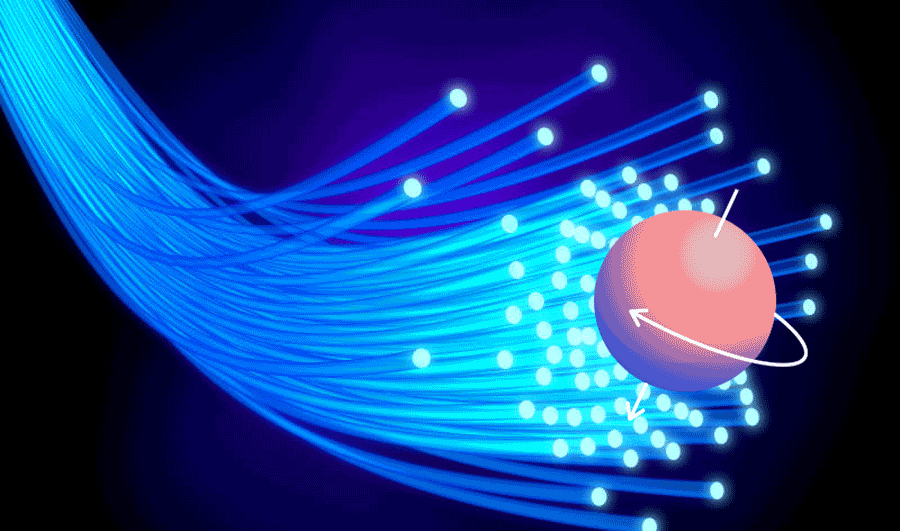Same Spark, More Bytes

Composite image by Yuen Yiu, Staff Writer and Abigail Malate, Staff Illustrator.
Image Rights: Background fiber-Optic photo by Matthew.nq/Wikimedia (CC by 4.0)
(Inside Science) -- Scientists from Oak Ridge National Laboratory in Tennessee have broken the efficiency record for data transfer. Using a quantum communication process known as superdense coding, they squeezed through an average 1.67 bits of data per qubit. Qubits, which is short for "quantum bits," are units of data that utilize quantum properties to store information.
The result beats the previous record of 1.63 bits per qubit. Even more importantly, the experiment used only simple, off-the-shelf technology, taking quantum communication closer to practical applications in the future. The work will appear in Physical Review Letters.
More bang for your bit
Computers send information in units called bits, which represent either a one or a zero. These bits can be understood as gumballs that one party (Alice) sends to another party (Bob). In a classical system, Bob would register a one if he receives a gumball and a zero for a space between gumballs. However, these gumballs also contain other properties that are not communicated in the classical system, such as color or flavor. The properties are analogous to quantum properties such as polarization or angular momentum, which can be found in the photons and electrons we use to transfer data today.
"We're basically trying to see what quantum abilities there are, and try to see what can we use them for," said Brian Williams, a quantum physicist from Oak Ridge National Laboratory. He is the lead author of the paper.
By inventing a way to encode and detect these inherent properties, Alice can send Bob more information per gumball. For example, if they decide that blue is one and red is zero, a single gumball can carry one extra bit of data. When applied to the quantum properties in particles like electrons and photons instead of gumballs, more data can be transferred in a similar fashion. The technique of packing more information into each of these particles through their quantum properties is known as superdense coding.
Williams and his team successfully built a system using superdense coding that can transfer 1.67 bits of data per qubit. The theoretical maximum of the system is two bits per qubit, but inevitable lost qubits kept the actual rate lower.
Laying the groundwork
While the technique of superdense coding seems straightforward in theory, its difficulty lies in execution. Quantum communication relies on a bizarre and tricky-to-achieve phenomenon called quantum entanglement. The qubits need to be transferred safely and detected accurately, and they are notoriously difficult to handle without destroying the information they contain.
"In this case they showed that this can be done in optical fiber and using single photon detectors," said Julio Barreiro, a physics professor from the University of California, San Diego.
Barreiro was part of a group led by Paul Kwiat from the University of Illinois at Urbana-Champaign that set the previous record of 1.63 bits per qubit in 2008. While the new record of 1.67 set by Williams' group is an incremental improvement, their system contains another major achievement -- its practical setup.
For the experiment, Williams' group used only ordinary optical fibers and common single-photon detectors. By using a simpler setup built with off-the-shelf lab equipment, their invention brings the technology a lot closer to real-world implementation.
"It was a very clever way of setting it up," Barreiro said.
As the abilities of classical computers are pushing up against the limits of physics, scientists are searching for ways to go beyond that barrier. Many believe the next leap will have to be quantum.
Quantum communication is one piece of the puzzle, but it needs other quantum technologies, such as quantum data processors and storage, to mature before it can be integrated into a device like a smartphone.
"In the future where quantum entanglement is just a commonplace technology that everyone is using, this protocol will be very useful," Williams said.

